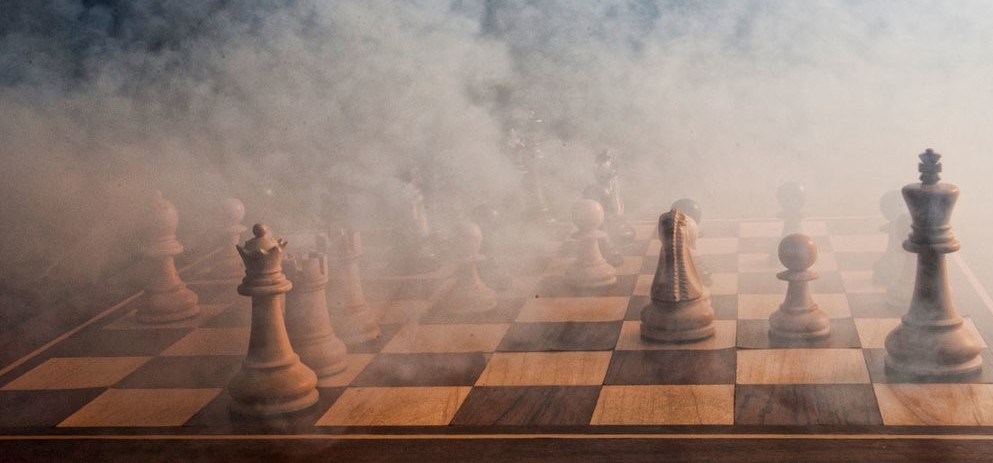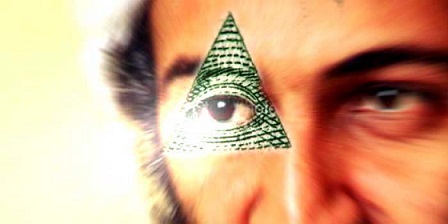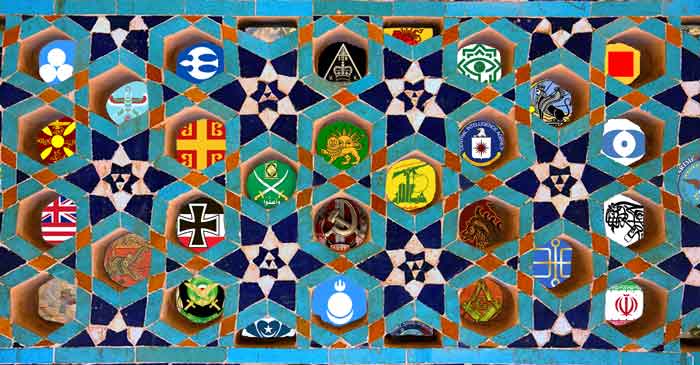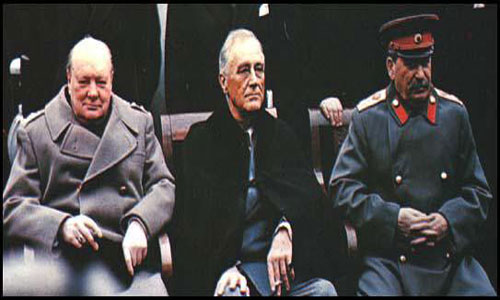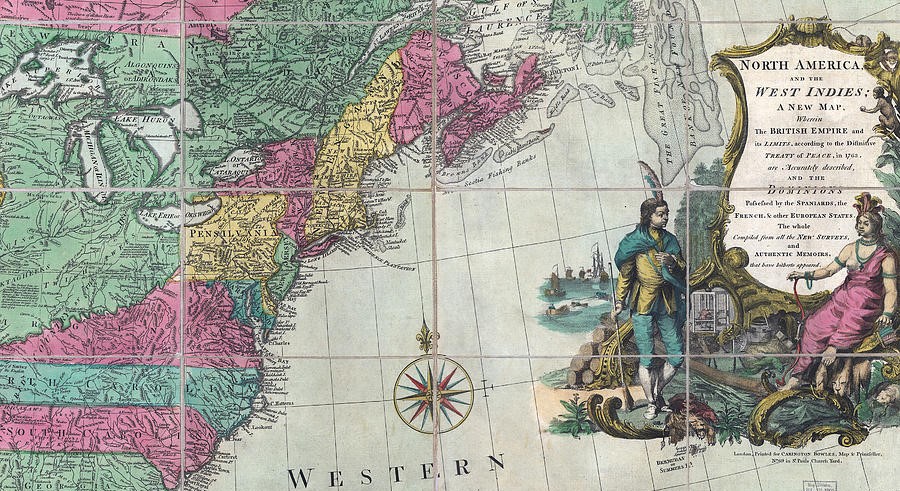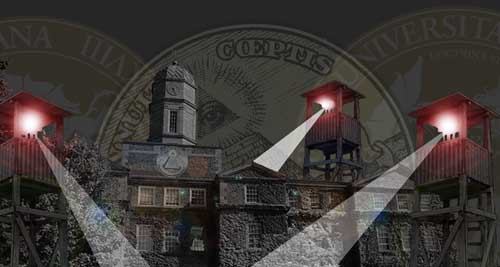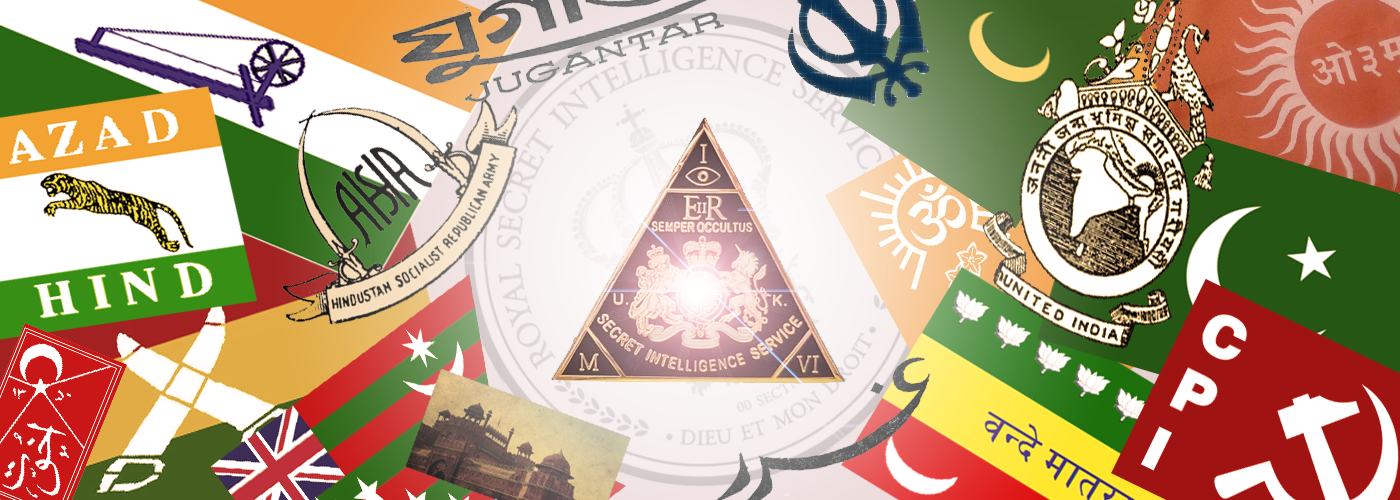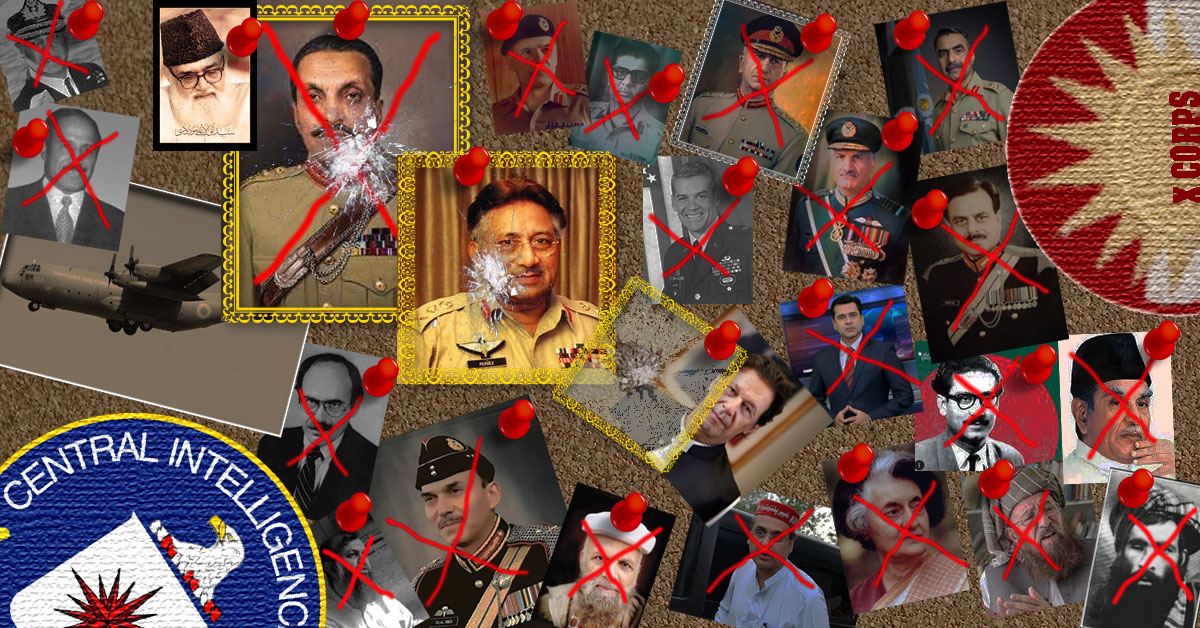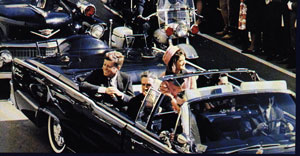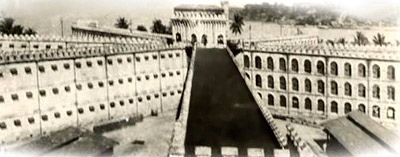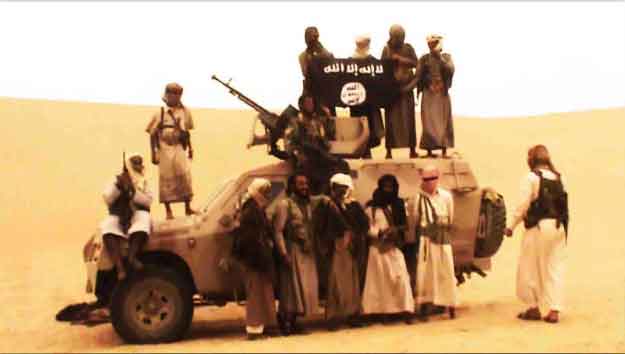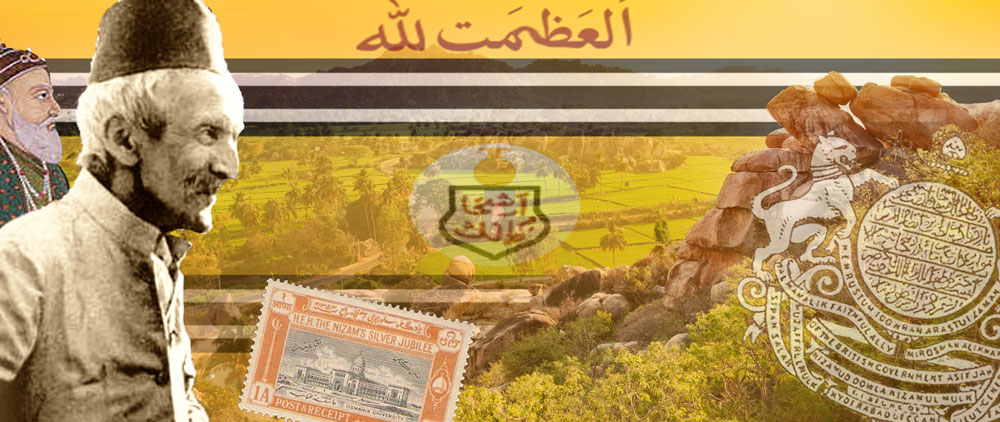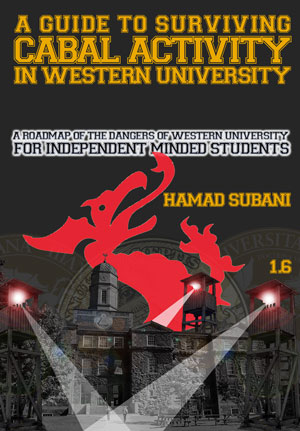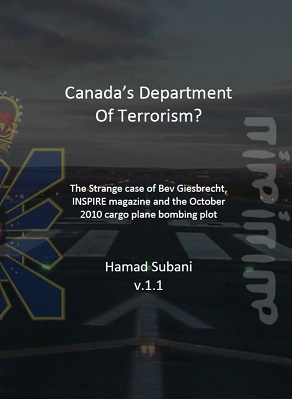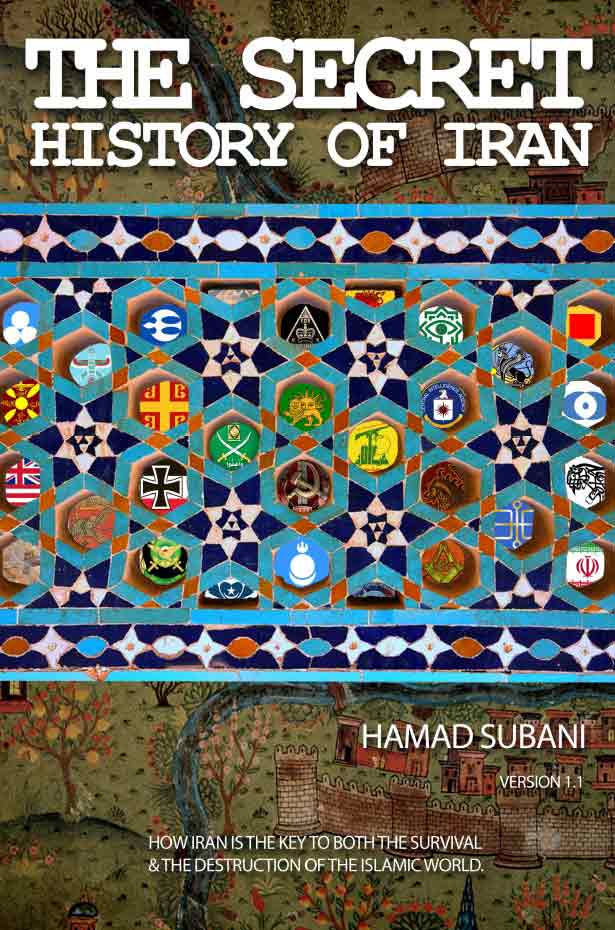
How the Blueprint Unfolded Part IV – The Non-Cooperationists
The Khilafat Movement
Recall Stage 2 of our earlier “Blueprint,”
Stage 2: The transfer of Afghanistan to the British Empire
Afghanistan was to be added to the British Empire (and it would later be transferred to “Pakistan.”). The Phoenicians had no intention to leave the Subcontinent with Afghanistan remaining as an independent country. The British Empire had always sought to control and subjugate the independent-minded people of Afghanistan. But their first attempt (1842) ended up in a total rout. In their second attempt (1878), they managed to impose some terms and conditions on Afghan rulers, but they could not tolerate the existence of Afghanistan as an independent country.
In the earlier sections, we saw that after the first (failed) British attempt of 1842, there was another attempt to transfer Afghanistan to the Russian Empire following 1857, by having its rulers join the 1857 Project, but that fell through.
As Afghanistan could not be subdued in 1857 because it was not a part of Mughal India and was neither party to the 1857 Project, it was planned to bring it under the sway of “Pan-Islamic” movements in India, which would allow Spooks based in British India to enter Afghanistan (hiding behind genuine jihadists) and engage in a catastrophic war with the British. Needless to say, this was once again straight out of the 1857 Rebellion Playbook. Jamal al-Din al-Afghani (a crypto-Jew from Iran pretending to be an Afghan) tried hard to make Afghanistan open a front against the British in 1868, so that the Russian Empire (another misanthropic Phoenician construct) could once more try to get involved under the pretext of providing support to the rulers of Afghanistan. All in the name of pan-Islamism. But the Afghan rulers got suspicious of him and kicked him out.
After the second (failed) military attempt of 1878, the Phoenicians came up with an ingenious plot to involve Afghanistan in the upcoming World War I as an Axis ally. This would let them conquer Afghanistan under the pretext of fighting World War I. However, the biggest obstacle was that the pragmatic rulers of Afghanistan were always wary of allying with foreign powers, and instead sought neutrality. They were however, sympathetic to Islamic causes, and the Phoenicians decided to manipulate this.
The Phoenicians arranged to create major movements among the Muslims of the Subcontinent, with special emphasis on allying with Ottoman Turkey and assembling in Afghanistan to fight the British Empire.
The project was revived in conjunction with other projects such as those of the Anushilan Samity and the Ghadr Party. Some prominent movements associated with the project were:
- The Khilafat Movement
- The Silk Letter Movement
- The German Kabul Mission
- The Provisional Government of India
- The Berlin Committee/ The Indian Independence Committee
There were some mysterious characters associated with these movements, such as:
- Mohamed Barakatullah Bhopali: Straight from the Spookopolis of Bhopal. He was also involved in the Ghadr Party. He died in San Francisco.
- Mohammad Ali Jauhar: His mother was an ardent supporter of Bal Gangadhar Tilak. He studied at Oxford and returned to the Spookopolis of Baroda to join their Civil Service, though he was from Rampur. While initially a supporter of the Congress party, he broke with them after Gandhi refused to support violence after the Chauri Chaura incident incident of 4th February 1922. He then joined the Muslim League and supported their Partition program. He died in London, and strangely enough, was buried in Jerusalem. Muslims usually prefer to be buried in Mecca. During the Khilafat Movement, he declared India as “Darul Harab (house of war)” and exhorted Muslims to migrate to Afghanistan (hijrat) while he and his family never did so.
- Shaukat Ali: The brother of Mohammad Ali Jauhar. He supplied guns to the Hindustan Socialist Republican Association and somehow was never charged for it. Was an all-time supporter of Jinnah and the Muslim League, and their Partition program.
- A Deshastha Brahmin named Pandurang Sadashiv Khankhoje, who came out of Washington State University. He later morphed into a Communist and was given a big position in the Mexico Government’s Department of Agriculture. Interestingly, Khankhoje features on a mural at Secretariat of Public Education (Mexico) painted by Jewish artist Diego Rivera, which seems to be a pun on the Last Supper.
- Mujtaba Hussain, who persuaded many supporters of the Khilafat Movement to later join the Ghadr party. He was from the Spookopolis of Jaunpur.[1]S.N. Agarwal. The Heroes of the Cellular Jail Rev. Edition (New Delhi: Rupa) 196. He was tried in Burma in the Second Mandalay Conspiracy case and was reportedly sent to the Andamans. The length of his sentence is unclear.
The natural sympathy the Muslims had with the Ottoman Caliphate was exploited to the maximum, to also include Imperial Germany. More astute readers are aware that both these entities were by now nothing more than Phoenician projects. The Ottomans had been infiltrated by the Phoenicians centuries ago and could barely defend their own cities, or even the Islamic holy cities, and so Germany promised to make up for their lack of military expertise. It should thus be noted that a lot of genuine Muslim leaders got ensnared in this trap. Such as Mahmud Hasan Deobandi who ended up being imprisoned in faraway Malta for several years in the aftermath.
The idea was that Muslim fighters ex-British-Indian Muslim fighters and their German friends would group en-masse in Afghanistan to fight the British Empire. Needless to say, such a big military force, teeming with British Intelligence operatives and Spooks, would sideline the local rulers of Afghanistan, who would have now have no choice but to march along, abandoning their pragmatic neutrality. The future war with the British would thus not be between the British Empire and the Rulers of Afghanistan, but between the British Empire and a new construct with deep ties to British India and British spooks. The war could thus be managed to ensure British victory. After Afghanistan’s local rulers were destroyed, the British would then cede the region to Pakistan, which would be run by localized Phoenicians. This would be the end of independent Afghanistan.
The idea was that
Muslim fightersex-British-Indian Muslim fighters and their German friends would group en-masse in Afghanistan to fight the British Empire. Needless to say, such a big military force, teeming with British Intelligence operatives and Spooks, would sideline the local rulers of Afghanistan, who would have now have no choice but to march along, abandoning their pragmatic neutrality. The future war with the British would thus not be between the British Empire and the Rulers of Afghanistan, but between the British Empire and a new construct with deep ties to British India and British spooks. The war could thus be managed to ensure British victory.

However the British were on a tight timeline, as they were also working parallel in Turkey, to destroy the Ottoman Caliphate! Once the Ottoman Caliphate was no more, it would no longer be possible to muster a Muslim-Axis alliance. And it seems this is exactly what happened. By late 1919, the Phoenicians abandoned the project altogether, and instead launched a desperate attempt at taking Afghanistan by a large-scale British invasion, complete with air bombings (this was new technology). Almost in conjunction, The Provisional Government of India played a part in the assassination of the legitimate Emir of Afghanistan Habibullah Khan in 1919! This proves that they were nothing but British Intelligence. Habibullah Khan was succeeded by the crypto-Phoenician Amanullah Khan to make things easier for the British invasion, but it seems he had limited authority and was unable to assist them. This would be the third and last British invasion of Afghanistan, and it ended with a stalemate. This was despite the fact that the Phoenicians had put their man on the Afghan throne by stirring intrigues in the royal house. Interestingly, The Berlin Committee/ The Indian Independence Committee completely disbanded around this time (1918), and most of its members morphed into active Communists allied to the Communist Party of China!
While the British were now gone for good, the Phoenicians still hate the people of Afghanistan for being unconquered by them. In 1979, the Phoenicians were back in Afghanistan as the Soviets, and for nine years, they tried to wrestle it from the Afghan people. Then they were back in 2001 as the Americans. Interestingly, the Americans seemed to have access to Soviet battle plans, and in some cases, they even used the same outposts and rebuilded the same long-abandoned airstrips.
Unintended Happenstance: Hindu-Muslim Unity and the Birth of the Non-Cooperation Movement
Gandhi lent his support to the more reasonable programs of the Khilafat movement, such as boycotting of British goods, which later found an echo in his later non-cooperation movements. However, this inadvertently destroyed the legitimacy of the Muslim League as a representative of Muslim interests, because its leaders were still on the fence.
Two things happened. The Congress started being seen as a champion of both the Hindu and Muslim interests. Secondly, the non-cooperation movement became firmly rooted in the Congress leadership. The British covered up how debilitating the effects of the non-cooperation movement were to them. We get some hint from the fact that the British started up local cigarette companies in Hyderabad State, hiding behind local manufacturers, because everyone stopped buying British cigarettes!
Savarkar Alarmed
Savarkar was furious at the Congress emerging as representative of both Hindu and Muslim interests, as this would jeopardize the upcoming Partition plan. Unfortunately for him, he was involved in Spookery in the Andamans, hoping that a violent freedom movement could be coordinated from there. But on the other hand, Gandhi grew strong on the mainland. When Savarkar returned, nobody seemed to be taking his Andaman credentials seriously. And unlike the Andamans, where he could establish limited “Hindu Raj” in a controlled environment with British support, the mainland was not so receptive. To quote him,
We could not take a step forward. We would not go a step backward, so we stood obstinately where we were planted. No doubt we were cornered and at bay. And all around us were hurled “slings and arrows” of misfortune. The newcomers—the non-cooperators and the Khilafatists looked down upon these seasoned soldiers, these fighters and revolutionaries, as sinners, because they were members of secret societies, and conspirators. The Non-co-operators and the Khilafatists had not seen even two years of prison-life. They were raw, vainglorious men, and they bragged of their suffering before those who had passed through ten years or more of transportation for life in the Silver Jail of the Andamans— the brave Sikhs who had never winced under the severest hardships! They vaunted of their worthless ‘Satyagraha’ and of their short imprisonment for it before these terrorists and presumed to despise them![2]Vinayak D. Savarkar, The Story of MY TRANSPORTATION FOR LIFE (A Biography of Black days of Andamans) Trans. From the Marathi original Maazi Janmathep by V. N. Naik (Ebook by Chandrashekhar V. Sane, 2016) p. 374. <https://library.bjp.org/jspui/handle/123456789/292> Accessed 12/12/2022.
Savarkar lamented the death of fellow Chitpavani Bal Gangadhar Tilak in 1920, as he believed that if only Tilak were still alive, he would have prevented such unity. To quote him,
The main topic of politics that year was the Khilafat and the Non-cooperation movements in India. In our discussions of that topic, I condemned them outright. I said, “The death of Lokmanya Tilak in India gave a fillip to these movements. It is a belief current among us that when a great man dies, nature helself is unable to bear the shock and she empts in hunicanes and typhoons, in pestilence and epidemics full of evil portent to the world. The exit from the Indian world of a powerful personality like Lokamanya Tilak ushered in the mad intoxication of Khilafat agitation conspiling with the cult of the Charka as a way to Swaraj in one year. It is to be won by the perverse doctrine of non-violence and truth. The Non-cooperation movement for Swaraj based on these twin principles was a movement without power and was bound to destroy the power of the country. It is an illusion, a hallucination, not unlike the hurricane that sweeps over a land only to destroy it. It is a disease of insanity, an epidemic and megalomania.”[3]Vinayak D. Savarkar, The Story of MY TRANSPORTATION FOR LIFE (A Biography of Black days of Andamans) Trans. From the Marathi original Maazi Janmathep by V. N. Naik (Ebook by Chandrashekhar V. Sane, 2016) p. 350. <https://library.bjp.org/jspui/handle/123456789/292> Accessed 12/12/2022.
I had pointed out even then to my fellow-prisoners how far this chameleon would go, what would be the extent of its jump. I had warned them how the alliance of non- cooperation with the Khilafat agitation was bound to end in disaster, that it was sure to raise in the country a wave of fanaticism and plunge the whole movement into conflagration, with its consequences to the country too terrible to imagine. I continued impressing the fact upon my colleagues and fellow-prisoners as long as I was in the Andamans. [4]Vinayak D. Savarkar, The Story of MY TRANSPORTATION FOR LIFE (A Biography of Black days of Andamans) Trans. From the Marathi original Maazi Janmathep by V. N. Naik (Ebook by Chandrashekhar V. Sane, 2016) p. 352. <https://library.bjp.org/jspui/handle/123456789/292> Accessed 12/12/2022.
Thankfully, only a few heeded his advice.
Ghadr Party Leadership Alarmed
The Phoenicians realized that many recruits of the failed Ghadr Party were switching over to the Khilafat Movement and the Non-Cooperation Movement of Mahatma Gandhi. Realizing that they had struck the axe on their own right foot, Ghadr Party leaders started issuing desperate pleas to their followers to quit all anti-British activities.
Towards the end of World War I, Lala Har Dayal Mathur published a letter in Indian newspapers urging all his followers to cooperate with the British and that only the British could give them independence. He even scares his followers into thinking that British defeat in World War I would result in Muslims becoming uppity! [5]Vinayak D. Savarkar, The Story of MY TRANSPORTATION FOR LIFE (A Biography of Black days of Andamans) Trans. From the Marathi original Maazi Janmathep by V. N. Naik (Ebook by Chandrashekhar V. Sane, 2016) p. 281-282. <https://library.bjp.org/jspui/handle/123456789/292> Accessed 12/12/2022. This literally sounds like a prank!
Bhai Parmanand, the would-be leader of the 1915 Punjab Rebellion, also sounds alarmed, and tries to falsely accuse the alliance for anti-Hindu communal riots, whereas the riots were more likely staged by British Intelligence to counter the alliance. To quote him,
[……] I was forced to the conclusion that the Khilafat agitation was at the bottom of all Hindu Muslim riots. That agitation had fanned the flame of religious bigotry and fanaticism in. the minds of the Muslims. It was the simplest thing in the world. Mahatma Gandhi had told the Mohammedans that the Khilafat was in danger and that they should unite against England in defence of their religion. The Government had their answer ready. They had not touched the Sultan of Turkey; and somehow or other put this idea into the head of Mohammedans that the real danger to Islam lay in the playing of bands before mosques and the placing of obstructions in the way of Tazyas by Hindus. Instead of realising their error and trying to neutralise its effects the Congress leaders took to voicing an absolutely wrong sentiment, that the presence of goondas among the two communities was at the bottom of Hindu Muslim riots. Had not the goondas been there already? Then, why were there no communal riots before? [6]Bhai Parmanand, trans. Sundra Iyer and Lal Chand Dhawan, The Story of my Life (Lahore: The Central Hindu Yuvak Sabha: 1934). p. 196.
Back then, British Intelligence was the biggest goonda on the block. They were staging communal riots to divert from the success of Gandhi’s alliance. To quote Bhai Parmanand’s thoughts penned in 1909 (published later in 1934),
The thoughts jotted down by me on the sheets of paper were broadly speaking, on two subjects, One was “What should be the future constitution of India?” On this I had written that the seat of the Central Government should be at Delhi and Simla. There should be a separate chamber for Indian princes,—like the House of Lords—the President of which should be the ruler of a state like Nepal. The second topic was the relation between Hindus and Musulmans. At that time it was impossible for me to anticipate the present unity. My idea was that the territory beyond Sindh should be united with Afghanistan and the North West Frontier Province into a great Musulman kingdom. The Hindus of the region should come away, while at the same time Musulmans in the rest of India should go and settle in this territory.[7]Bhai Parmanand, trans. Sundra Iyer and Lal Chand Dhawan, The Story of my Life (Lahore: The Central Hindu Yuvak Sabha: 1934). p. 41.
Bhai Parmanand’s musings in 1909
Note that Bhai Parmanand later identified as a “Hindu Nationalist,” (when he was done with the Ghadr Party) and these were his thoughts in 1909, 38 years before the creation of Pakistan! Looks like this slipped past the editors. Plebs don’t exhibit such levels of strategic thinking. Only Phoenicians do. The Muslims of the Subcontinent were surprised with the prospect of Partition after 1935. Prior to that, it was not even considered a possibility. But here you have this being laid out 38 years in advance. Both Stage 2 (Annexation of Afghanistan by British India) and Stage 6 (Partition, and the clubbing of Afghanistan with Pakistan) of my blueprint are confirmed here.
Around 1942, Gandhi would relaunch a newer and more portent version of the Non-cooperation movement, which became known as the Quit India Movement.
Unintended Happenstance: The Singapore Mutiny of 1915

Present day Singapore was originally part of the Johor Sultanate. It was snatched up by the British using deception and false promises in 1818. In 1824, a further treaty with the Sultan led to the entire island becoming a British possession. In 1826, Singapore became part of the Straits Settlements, then under the jurisdiction of British India. This did not sit well with the Johor Sultanate. But the Phoenicians found a way around this by appointing a Spook candidate to the throne named Sulaiman Badrul Shah. With a stroke of a pen, he broke up the Johor Empire in 1857 into two big parts and gave up the sovereignty of his part of territory to the Dutch. This also marked the end of the original Johor-Riau Sultanate, that descended from the Sultanate of Melaka. This division remains until today as the Malaysia–Indonesia border. By 1860, the British had countered the local Muslim presence in Singapore by importing animalistic, non-Muslims from South East Asia into Singapore, who became half of the population. Later, in the 1890s, when the rubber industry became established in Malaysia and Singapore, the island became a global centre for rubber sorting and export.
After the British left following World War II, Singapore was expected to be returned to Malaysia. But instead, the Phoenicians used the animalistic non-Muslim population of Singapore to create a little fiefdom which pretends to be a democracy, but is instead ruled with an iron fist by the Li/Lee family. This is the same Phoenician family that rules China. No wonder China doesn’t bother them (Singapore is China’s biggest trading partner).
Going back to the Mutiny of 1915. As we have read earlier, there was a plan to land rebels on the Orissa coast and the Burma coast. Someone came up with the idea of landing the entire 5th Light Infantry stationed at Singapore, consisting of 850 mainly Rajput Muslims, on the coast of Orissa. The British were to put them on a boat destined for the Ottoman front, and the mutiny was to take place on the boat. They would commandeer it straight to the Orissa coast. A local imam, Nur Alam Shah who was linked to the secret Ghadr movement played a major part in convincing most of these soldiers that it was not permissible to fight the Ottomans, and that they had no recourse but to mutiny.[8]Ban, Kah Choon (2001). The Untold Story of Special Branch Operations in Singapore 1915–1942. Singapore: SNP Media Asia. pp. 28–29. ISBN 978-981-4071-02-4. Strangely he was not put on trial, although another local merchant Kassim Mansoor who interacted with the soldiers was later executed. This confirms that this was an inside job.
The boat was to depart after their farewell parade on 15th February 1915. However, it seems that some soldiers got the wrong message and decided to prematurely mutiny in Singapore itself rather than leave on the boats and then mutiny onboard. Up to half of the 5th Light Infantry joined the mutiny. Most of these brave men were Rajput Muslims. For the Phoenicians, this was a nightmare, as Singapore was already a disputed territory, and even temporarily losing control of it could open claims of other powers. The local Muslims were already sympathizing with the rebels, and with a slight push, Singapore could break free, undoing more than a century of Phoenician attempts to keep it fettered. As it was the middle of the Chinese New Year, most of the Chinese Volunteers Corps were on leave, leaving Singapore almost defenceless against the mutiny. British forces were scattered elsewhere as World War I was underway.
But the Phoenicians arranged for immediate support from other Phoenician powers. Just two days later, the French cruiser Montcalm, followed by the Russian auxiliary cruiser Orel and Japanese warships Otowa and Tsushima arrived and helped put down the mutiny! If these were really independent, competing nations, why would they prioritize the security of a British port so much? In fact, they could have taken advantage of the situation and claimed the port. This is one of those rare historical instances where we see all of them barking to the master’s voice in unison.
If these were really independent, competing nations, why would they prioritize the security of a British port so much?
In the aftermath, more than 205 sepoys were court-martialled, and 47 were publicly executed. The executions were unnecessary but the Phoenicians wanted to send a strong message to the local Muslims of Singapore, of the consequences that awaited them should they try to make Singapore free again. In the Inquiry, the British were keen to dismiss any notions of a conspiracy connected to other groups. They tried hard to portray it as a localized, isolated incident.
Ironically, had the mutiny panned out as planned, and the rebel soldiers had indeed landed on the coast of Orissa, they would later discover that they had been fighting for the likes of Savarkar and Aurobindo.

Unintended Happenstance: The Malabar Rebellion of 1921

Phoenicians are naturally attracted to coastlines and the prospect of Maritime trade. As such they had colonized the Malabar coast of South West India ages ago. There are theories that they later operated either through or in association with Nambudiri brahmins, who have mysterious origins. There is also an overlapping Jewish presence in the region. The dominating influence of the Nambudiris can be found in all matters: religion, politics, society, economics and culture of Kerala.[9]Pullapilly, Cyriac K. (1976). “The Izhavas of Kerala and their Historic Struggle for Acceptance in the Hindu Society”. In Smith, Bardwell L. (ed.). Religion and Social Conflict in South Asia. International studies in sociology and social anthropology. Vol. 22. Netherlands: E. J. Brill. pp. 26–30. ISBN 978-90-04-04510-1. Retrieved 9 June 2011.
As expected their relationship with the locals was far from a happy one, as they created a landowning aristocracy called the Jenmi for themselves. To quote,
Jenmi is the term used to refer to the landed aristocracy of Kerala. They formed the landowning nobility as well as the landed gentry of the region during Medieval times, and the majority of the estates and feudal properties were owned by this community. They predominantly belonged to the Nambudiri (Brahmin priests) and Nair (kings, lords and soldiers) castes, and it was not unusual for an aristocratic family to own up to 20,000 acres (81 square km) of land. The Maharajas of Cochin and Travancore, as wells as many other rulers such as those of Punjar in Travancore, were well known for their numerous feudal estates.
[……]The Zamorins of Calicut were also Jenmis in their own right, owning at least 60,000 to 90,000 acres of estate lands.
[…….]The largest landlords of Malabar included the Vengayil family which owned 200,000 acres (810 square km) of forest lands, while the Chirakkal Raja owned about 30,000 acres (120 square km) of land. Other major Jenmis included the Kurumathoor Namburidipad (5,615 acres) and the Kalliat Nambiar (36,779 acres).
To further quote,
Medieval Kerala has been characterised as an oligarchy which was dominated by the Nambudiris, who owned all the temples and their subsidiary villages. The Nambudiris had influence with the ruling class through the practice of sambandam, where younger Nambudiris used to have relationships with Kshatriya women or women from the upper sections of the Nair caste. The children of such unions were not considered Nambudiris, but a part of their matrilocal lineages. As a result of such unions, many kings and ruling chiefs in Kerala would be the offspring of Nambudiri fathers. These arrangements allowed the Nambudiris to gain political power in addition to religious and cultural dominance.
The Nambudiri’s grip on land was maintained through the practice of strict primogeniture and patrilineal inheritance. Despite their younger members having hypergamous relationships with Nairs, whose caste traditions were matrilineal, Nambudiri families remained aloof from general society.
This concubinage arrangement continued even till the 1920s. The historian E. K. Pillai further claimed that the Nambudiris from the 1100s enforced matrilineal polyandry on the previously patrilineal communities of the area!
In other words, the Nambudiris were considered the untouchable owners of Malabar. But in 1766, the Tipu Sultan’s father invaded Malabar. This was a messy war, with the Spook states of Travancore and Cochin coming to rescue of the Nambudiris, and the Nambudiris in turn mobilizing Nair loyalists, many of whom got massacred. During the Mysorean invasion of Malabar, the Nambudiri-dominated Jenmi took refuge in neighbouring states. Tipu Sultan’s Kingdom of Mysore, having driven the Nambudiri-dominated Jenmi out of Malabar, reached an accord with the local farmers, who were mainly Moplah Muslims. A new system of land revenue was introduced for the first time in the region’s history with the government share fixed on the basis of actual produce from the land.[10]Planning Commission – Government of India, Kerala Development Report (Delhi: Academic Foundation, 2008) p. 53.
Within five years, the British East India Company arrived in Malabar to rescue the Nambudiri-dominated Jenmi, defeating Tipu Sultan and ending his reign over the region. And later, the British would kill Tipu Sultan for his transgression. This allowed the Jenmi to return to their homes and regain the lands lost during the Mysorean invasion, with the help of the British administration and British courts. The British then gave the Nambudiri-dominated Jenmi absolute property rights, backed by the guns of the British. As a result all land became the private property of the Nambudiri-dominated Jenmi, who could now evict tenants using British police forces. The Moplahs now had to pay rents as high as 75–80% of net produce.[11]Planning Commission – Government of India, Kerala Development Report (Delhi: Academic Foundation, 2008) p. 53.
In 1852, the local Moplah Muslims became the first locals to rebel against the Jemni. To quote,
Mattanur witnessed large scale communal riots between the Moplah tenants and their Nair landlords during 1852. The riots started when an armed band of 200 Moplahs entered the house of the local landlord, Kalathil Kesavan Thangal, and massacred his entire family of 18 members. The rioters then decided to eliminate the most powerful Jenmi in the district, Kalliat Anandan Nambiar. However, their plans were somehow leaked and the landlord fled with his family, leaving his nephew Kalliat Kammaran Nambiar to defend the land. Kammaran Nambiar organized a militia of 300 Nair warriors and waited for the rioters. The unsuspecting rioters were ambushed and massacred, and the tenants were forced to abandon their campaign and disband.
1921, the Moplahs rebelled again. But this time, fired up by the rhetoric of the Khilafat Movement, and mainly against British-Indian officers. They attacked and seized police stations, government treasuries, and entered the courts and registry offices where they destroyed records. Some even climbed into the judges’ seats and proclaimed swaraj. They even fought fierce battles with the British, sometimes forcing them to retreat. To quote,
In fact, from August 1921 to early 1922, the British administration was effectual only within the range of the gun in Southern parts of Malabar district of Madras Presidency (now Kerala).[12]S.N. Agarwal. The Heroes of the Cellular Jail Rev. Edition (New Delhi: Rupa) 243.
Needless to say, this was an unintended happenstance, as the Phoenicians did not nurture the Khilfat Movement for this purpose. It also became extremely necessary that the Moplah rebels are not seen as freedom fighters. Therefore British Intelligence quickly mobilized to insert spies and agent provocateurs among the rebels, whose job was to anatgonize Hindus and give the rebellion a communal flavour. The rebel leaders being no idiots, and realizing that the entire British-Indian press was also participating in maligning the movement, reached out to American newspapers with the following message:
“A few cases of conversion of our Hindu brethren have been reported to me.” the message said. “But after proper investigation we discovered the real plot. The vandals that were guilty of this crime were members of the British reserve police and British intelligence department, and they joined our forces as patriots to do such filthy work only to discredit our soldiers. There are Christians, Hindus and Moplahs amongst these British agents and spies. They have decidedly been put to death.
“We are at war with England. We are fighting for the independence of India, and we are doing exactly what the Americans did to free America from British domination. So anyone giving aid and comfort to the enemy will be se verely dealt with, irrespective of social position or religious affliation.
“Let the great people of the great land of Washington postpone judgment until they have a chance to know the full truth about the present war in Malabar.”
In the aftermath, the British came down on the Moplahs with an iron fist. All rebel leaders were hanged by the British. Unofficial estimates put the number of civilian deaths at 10,000. 50,000 people imprisoned, of which 20,000 were deported, mainly to the Andaman Islands. Since there was not enough room at the Cellular jail for this crowd, they were instead relocated to islands that needed agricultural development.
The Phoenicians decided to malign the movement as an anti-Hindu one, run by “Wahabies” Jihadists and Muslim zealots. Savarkar, Ambedkar & Annie Besant all came together to denounce the movement. And in 1924, Savarkar published a semi-fictional novel Moplah for all his followers, in which he tries hard to portray the rebellion as an anti-Hindu “genocide.” The Arya Samaj claimed that about 600 Hindus were killed and 2,500 forcibly converted during the rebellion. They don’t disclose however, how many were associated with the Jemni.

Savarkar was very angry that no Hindus bothered to come to the defense of the Nambudiris in the name of Hindudom. To further protect the Nambudiris from the Moplahs, it was decided to create organizations specifically for protecting Phoenicians masquerading as Hindus. The Rashtriya Swayamsevak Sangh was formed by K. B. Hedgewar immediately in the aftermath of the rebellion.
The Phoenicians also realized that most of the Moplahs were originally Hindus who had converted to Islam generations ago. And more and more low caste people from Malabar were converting to Islam to escape the caste structure dominated by the Nambudiris. It was exactly at this time (1923) that the Shuddhi movement was launched, to reconvert them back to Hinduism. While it had limited success in Malabar. It did target various Rajput groups who had converted to Islam in North India. It was exactly around this time (1925-26) when Savarkar published a memoir urging all his followers to support the Shuddhi movement.[13]Vinayak D. Savarkar, The Story of MY TRANSPORTATION FOR LIFE (A Biography of Black days of Andamans) Trans. From the Marathi original Maazi Janmathep by V. N. Naik (Ebook by Chandrashekhar V. Sane, 2016) p. 192-199 <https://library.bjp.org/jspui/handle/123456789/292> Accessed 12/12/2022.. To quote from it,
The Moplas of Malabar are by blood and bone half-Hindus. They have forgotten the mothers who gave them birth, and today, they swear by their fathers and behave as bitter enemies of the Hindus. Whence this difference m one generation or two? The difference has arisen by their conversion to Islam, by “the childish play” of the Moulvl who cut their tuft of hair and made them grow a beard.[14]Vinayak D. Savarkar, The Story of MY TRANSPORTATION FOR LIFE (A Biography of Black days of Andamans) Trans. From the Marathi original Maazi Janmathep by V. N. Naik (Ebook by Chandrashekhar V. Sane, 2016) p. 197 <https://library.bjp.org/jspui/handle/123456789/292> Accessed 12/12/2022..
Later the Phoenicians realized that the hasty but permanent deportation of Moplah families to the Andamans was a strategic mistake. The islands were meant to be permanent British bases. Having a large Muslim population settled on them could be problematic. And so, Savarkar was tasked with an attempt to reconvert them back to Hindusim by organizing a Shuddhi movement in the Andamans, but with limited success. With that failing, he tried to prevent freed Hindu prisoners from returning to the mainland and instead advocated that they be settled on the islands with their families to balance the Moplahs. This drew the ire of prisoners, who started rightly suspecting[15]Vinayak D. Savarkar, The Story of MY TRANSPORTATION FOR LIFE (A Biography of Black days of Andamans) Trans. From the Marathi original Maazi Janmathep by V. N. Naik (Ebook by Chandrashekhar V. Sane, 2016) p. 346. <https://library.bjp.org/jspui/handle/123456789/292> Accessed 12/12/2022. that Savarkar was involved with British officials. Savarkar did manage to completely remove Urdu from official British communications and records used on the island. [16]Vinayak D. Savarkar, The Story of MY TRANSPORTATION FOR LIFE (A Biography of Black days of Andamans) Trans. From the Marathi original Maazi Janmathep by V. N. Naik (Ebook by Chandrashekhar V. Sane, 2016) p. 326. <https://library.bjp.org/jspui/handle/123456789/292> Accessed 12/12/2022. Around the same time, the Government of British India started allowing the Moplahs to return back to the Indian mainland. [17]S.N. Agarwal. The Heroes of the Cellular Jail Rev. Edition (New Delhi: Rupa) 244.
The Moplahs, being completely destroyed, would not rebel again, but the Nambudiri-dominated Jemni continued to face rebellion from other groups. And the Phoenicians could not label them as religious fanatics because the new rebels were not Muslim. To quote,
Kayyur is a small village in Hosdurg taluk. In 1940, peasants there under the leadership of communists rose against the two local Jenmis, Nambiar of Kalliat and the Nayanar of Karakkatt Edam. Several people were killed in the conflict and four Communist leaders were found guilty and hanged by the government.
Another historic movement was at Korom village in Payyanur on 12 April 1948. Farmers from Payyanur Farka marched to the rice godown of the landlord, Aalakkat Mavila Kunhambu Nambiar, and took control of it and distributed the rice stored there among them. The Malabar Special Police force arrested the volunteers, including K P Kunhikkannan, the leader of the “Karshaka Sangham”, upon the request of the landlord. To protest against these arrests, people marched to the spot where the volunteers were kept under police custody. The police started firing on the procession, and this resulted in the death of a harijan youth named Pokkan, who became the first martyr in Payyanur Farka during the 1948 movement.

The Congress Party
This essay is about the lesser known Groups associated with the Freedom Movement. And as such, there will not be a detailed discussion on well-known players like the Congress Party. I have left the Congress for the last exactly for this reason.
The Congress Party too, was of questionable origin, with prominent British Theosophists being its founding members. Prior to Gandhi’s rise, it became an established custom to have Spooks, Spook-princes, Spook-intellectuals and rich Spook-merchants do a cameo in the Congress Party, so that they could later be seen as freedom fighters. But later on, Gandhi’s unprecedented influence on the party turned it into the most legitimate part of the Freedom Movement.
They Misread Gandhi!
The Phoenicians let Gandhi continue because they misread Gandhi. They assumed that he was an opportunist, who later on, would turn back on his principles of non-violence once he tasted power, letting his movement spiral into violence (and he would get hanged/eliminated in process, putting the party back under Phoenician control). After all, Gandhi’s movement was a big one, with lots of potential for violence, even if Gandhi did not call for it. When the Freedom Movement would devolve into a violent one, only leaders skilled in violence and having access to a spigot of resources would be able to dominate (read: Western Intelligence Agencies and Countries).
The Phoenicians let Gandhi continue because they misread Gandhi. They assumed that he was an opportunist, who later on, would turn back on his principles of non-violence once he tasted power, letting his movement spiral into violence
Initially, the original turning point was supposed to be the Jalianwala Bagh Massacre of 1919 in the Spookdom of Punjab. In this staged event, the British authorities put two Congress leaders under house arrest, and then opened fire on some peaceful protesters, killing hundreds. The idea was to provoke the Congress. But Gandhi refused to endorse violence, and instead demanded answers from the British. The British answer was to have the main accused, Colonel Reginald Dyer, fake his death 8 years later rather than stand before an inquiry.[18]Another accused, Michael Francis O’Dwyer, the Lieutenant Governor of Punjab was allegedly “killed” in London 21 years later by a Ghadarite rather than be charged.
The Phoenicians were now forced to create a new turning point. This time they became more imaginative and decided that the Congress would do the initial violence. This would be the Chauri Chaura incident of 1922 at the rather remote Spookopolis of Gorakhpur, in which Congress “volunteers” would allegedly “kill” 22 policemen and three civilians, followed by the British giving death sentences to 170 people. Going into the specifics of this staged incident is beyond the scope of this essay, and there is the likelihood that some parts of it were faked, including the deaths of the British-Indian police officers. Also, the main perpetrators seemed to have been left untouched.
Gorakhpur, an Ancient Phoenician Spookopolis
The location of the Chauri Chaura incident is an ancient Spookopolis. Located in Gorakhpur is the Gorakhnath Math, a “Hindu” temple. It was named after a 14th century Yogi named Goraknath. Some believe he was Buddhist. Strangely, there are numerous references to him in the poetry of Kabir and of Guru Nanak. The Gurkhas of Nepal, important tools of British colonialism, take their name from this saint. Gorkha, a historical district of Nepal, is named after him. Goraknath was influenced by another earlier Shaivite saint called Matsyendranatha. Strangely enough, this Saint too, figures in Sikhism. To quote,

In the Dasam Granth, Guru Gobind Singh narrated a huge discourse between Matsyendra Nath and Paras Nath on Intuitive (Bibek) and Non-Intuitive Mind (Abibek). Parasnatha subdued kings of the world and turned egoistic, and was broken by Matsyendranatha’s spiritual preachings. This granth is regarded among Spiritual warriors of Khalsa Panths called Nihang Singhs.
One Mahant of this temple was Digvijay Nath. He joined the Congress Party in 1920. He was arrested for taking an “active part” in the Chauri Chaura incident.[19]Jaffrelot, Christophe (6th October 2014). “The other saffron”. Indian Express. <http://indianexpress.com/article/opinion/columns/the-other-saffron/99/> Retrieved 6th October 2014. Although 19 people would be hanged and and 151 people would be imprisoned by the British, Digvijay Nath was soon released. After the Chauri Chaura incident, he would join V. D. Savarkar’s Hindu Mahasabha in 1937. He incited Hindus to kill Mahatma Gandhi in a public meeting on 27 January 1948, three days before the actual assassination.[20]Jha, Krishna and Jha, Dhirendra K., Ayodhya: The Dark Night (HarperCollins India, 2012) p. 28-30 He later figures in the capture of the Babri Masjid in Ayodhya. The current Mahant is Ajay Singh Bisht/Yogi Adityanath, the controversial Chief Minister of Uttar Pradesh.
Gorakhpur district was also home to a British military cantonment which was established in 1801. Spook operations are usually coordinated out of such cantonments.
Coinciding Release of “Political Prisoners” in the Andaman Cellular Jail
Further confirmation that the Chauri Chaura incident was preplanned years ago is the fact that data from 1914 reveals that all “political prisoners” at the Andaman Cellular Jail (mostly associated with the Anushilan Samity) had been scheduled to be released from 1915 to 1919. This would give them ample time to settle down and later emerge/contribute to the violent turn of events following Chauri Chaura. Even the Savarkar brothers and the brother of Aurobindo, who were all sentenced to life[21]Savarkar was sentenced to 50 years. are back in India by 1921!
These release dates are given with the particulars of political prisoners in the Cellular Jail in 1914.[22]S.N. Agarwal. The Heroes of the Cellular Jail Rev. Edition (New Delhi: Rupa) 161-162. That was eight years before the Chauri Chaura incident!
One such prisoner released in 1920 was Sachindra Nath Sanyal. We earlier came across him as the Ghadr Party leader who tried to take Benares in 1915. He founded the Hindustan Socialist Republican Association in October 1924, which made a last ditch attempt at kickstarting a violent freedom struggle, given that the Anushilan Samity, Savarkar and the Ghadr Party had failed. To raise funds, the Hindustan Socialist Republican Association made several brazen robberies. But Sanyal got caught and was once again sentenced to life imprisonment in the Cellular Jail at the Andamans for his involvement in the Kakori conspiracy. Strangely, he is “released” in 1937. We are told he died on 7th February 1942 at Gorakhpur Jail (The Spookopolis that hosted the Chauri Chaura incident). Is it even possible for a person to be deported to the Andamans twice, and released twice?
Attempts to Maneuvre the Hindustan Socialist Republican Association to the Forefront
Things became desperate for the Phoenicians as they realised the clock was ticking louder and louder. The British had to leave with the scheduled onset of Partition, or it would not proceed. And the Congress clearly stood to inherit independent India…….unless the Phoenicians managed to stir another violent freedom movement within this timeframe.

With the failure of Sanyal’s leadership, the Communist Bhagat Singh took the reigns of the Hindustan Socialist Republican Association (HSRA), but with limited success. Things became desperate for the Phoenicians as they realised the clock was ticking louder and louder. The British had to leave with the scheduled onset of Partition, or it would not proceed. And the Congress clearly stood to inherit independent India…….unless the Phoenicians managed to stir another violent freedom movement within this timeframe. And so, we see all the old Ghadr Party networks and Anushilan Samity groups being reactivated, with all their remaining cadres crawling out of the woodwork. All under the banner of the Hindustan Socialist Republican Association. By this time, they also had a Hindustan Socialist Republican Army! And as in the case of the Ghadr Party, Lahore remained their headquarters. But things went awry. The vitriolic Lala Lajpat Rai who was associated with these groups ended getting killed in a 1928 protest. The Hindustan Socialist Republican Association killed the British policeman responsible, but Bhagat Singh became implicated in the process. With Bhagat Singh now being a marked man, it was decided that another event would be organized that would give immense publicity to the HSRA, while at the same time, allowing for Bhagat Singh to “exit” the scene. To quote,
In 1929, he proposed a dramatic act to the HSRA intended to gain massive publicity for their aims. Influenced by Auguste Vaillant, a French anarchist who had bombed the Chamber of Deputies in Paris, Singh’s plan was to explode a bomb inside the Central Legislative Assembly. The nominal intention was to protest against the Public Safety Bill, and the Trade Dispute Act, which had been rejected by the Assembly but were being enacted by the Viceroy using his special powers; the actual intention was for the perpetrators to allow themselves to be arrested so that they could use court appearances as a stage to publicise their cause.
In other words, they were using a combination of smoke-n’-mirrors and theatre to create a fake contender to the Congress Party. As expected, the two bombs thrown turned out to be props and no Englishman was killed. And despite being armed, Bhagat Singh turned himself in. But a lot of drama and publicity for the HSRA was generated. It is clear that Bhagat Singh and his companions would not be executed, as there were plans to rescue them from jail, giving them even more publicity as the leaders of a new Freedom Movement. HSRA member Durga Devi’s husband, Bhagwati Charan Vohra, manufactured bombs for the purpose, but died because of an accidental explosion.[23] “Bhagat Singh: A Perennial Saga Of Inspiration”. Pragoti. 27th September 2008. Archived from the original on 30 September 2015. Retrieved 28 October 2011.
Coincidentally, the HSRA’s secret bomb factories in Lahore and Saharanpur were discovered around this time, and many of its cadres became informants. This ultimately sealed the fate of the HSRA and led to a massive crackdown on their networks.
Bhagat Singh and two others were supposedly hanged at Lahore (despite the bombing taking place at Delhi). Their bodies were not released and were instead cremated. Seven others were sent to the Cellular Jail in the Andamans. Gandhi refused to endorse the violence, although he was pressured in every possible way.
Simultaneously in Bengal, the dormant Anushilan Samity sprung back in action with a plan to capture the two main British armouries in Chittagong, destroy the telegraph and telephone office, and take as hostages members of a European Club, while cutting rail and communication lines to severe Chittagong from Calcutta. Banks at Chittagong were to be looted to gather money for further uprisings, and other freedom fighters were to be freed from jails. It did not go as planned, despite the rebels hoisting their flag in the city square. Popular support did not materialize because people were too surprised. And soon the rebels had to retreat to the hills. It did not end well.
As more and more localized Phoenicians started resorting to violence in a desperate attempt to kickstart a violent Freedom Movement, it was decided that the best place to lodge them (when caught) was the Andamans, where they would be safe from the prying eyes of local authorities. And so, in 1932, it was decided to re-use the Cellular Jail for this purpose, as opposed to Indian jails. [24]S.N. Agarwal. The Heroes of the Cellular Jail Rev. Edition (New Delhi: Rupa) 268. By 1938, there were 386 political prisoners[25]S.N. Agarwal. The Heroes of the Cellular Jail Rev. Edition (New Delhi: Rupa) 271. in the Andamans, with more than 90% from Bengal.
Gandhi’s Experiment with Truth
In the Chauri Chaura incident, it was arranged for the Congress supporters to go violent, followed by British counterviolence, and then Gandhi was expected to announce that the movement had now adopted violence. Immense psychological and emotional pressure was put on Gandhi by compromised followers and leaders of all shape and size. But Gandhi backed out from supporting violence. And thus the Congress (and Gandhi) could no longer be used for fomenting a violent Freedom Movement.
It was at this point that the Phoenicians realised that Gandhi had to be eliminated. And thus we see a sudden uptick in assassination attempts following 1922. At the same time, they decided to “punish” the people of the Subcontinent by jailing Gandhi and delaying the British departure (they judiciously utilized this time for fomenting the Partition). In this timeframe, the Phoenicians desperately tried to kickstart another violent Freedom Struggle (but this time, without Gandhi) through many acts of violence.
Beginning with the year 1934 over a period of 14 years, there would be six assassination attempts on Mahatma Gandhi, with the last one being successful. As the clock for complete British withdrawal started ticking, the Phoenicians realized that it would be incredibly difficult to assassinate him in an independent India, where British Intelligence could no longer openly operate. They finally succeeded on 30th January 1948. While India would gain “independence” on 15th August 1947, many key British institutions were still operating under British officials. And British Intelligence was still busily operating in this twilight zone.
I doubt Gandhi had any idea of what he had accomplished by the simple act of sticking to his principles by rejecting violence after the Chauri Chaura incident of 1922. He had inadvertently changed the destiny of the entire Subcontinent, trashing more than a century of Phoenician strategies for the post-British Subcontinent. Let’s just say it was another one of his experiments with truth, the results of which escaped him as well as the entire populations of the Subcontinent.
CONTENTS
- The Secret History of British India’s “Freedom Movements.”
- An Introduction to the “1857 Project”
- The 1857 Project as a Spook Playbook for later Ops in the Subcontinent
- Phoenician Spookopolis’ Across the Subcontinent
- A (long) note on Fazl-e-Haq Khairabadi
- The Strange Fate of Jhansi State
- Later “Freedom Movements” that follow the 1857 Rebellion Playbook
- How the Blueprint Unfolded Part I – The Bengal Front
- How the Blueprint Unfolded Part II -The Ghadr Party and the Punjab Front
- How the Blueprint Unfolded Part III -The Communalists
- How the Blueprint Unfolded Part IV – The Non-Cooperationists
- Conclusion; Revisiting the “Original Blueprint” + Epilogue: Reactivation!
| ↑1 | S.N. Agarwal. The Heroes of the Cellular Jail Rev. Edition (New Delhi: Rupa) 196. |
|---|---|
| ↑2 | Vinayak D. Savarkar, The Story of MY TRANSPORTATION FOR LIFE (A Biography of Black days of Andamans) Trans. From the Marathi original Maazi Janmathep by V. N. Naik (Ebook by Chandrashekhar V. Sane, 2016) p. 374. <https://library.bjp.org/jspui/handle/123456789/292> Accessed 12/12/2022. |
| ↑3 | Vinayak D. Savarkar, The Story of MY TRANSPORTATION FOR LIFE (A Biography of Black days of Andamans) Trans. From the Marathi original Maazi Janmathep by V. N. Naik (Ebook by Chandrashekhar V. Sane, 2016) p. 350. <https://library.bjp.org/jspui/handle/123456789/292> Accessed 12/12/2022. |
| ↑4 | Vinayak D. Savarkar, The Story of MY TRANSPORTATION FOR LIFE (A Biography of Black days of Andamans) Trans. From the Marathi original Maazi Janmathep by V. N. Naik (Ebook by Chandrashekhar V. Sane, 2016) p. 352. <https://library.bjp.org/jspui/handle/123456789/292> Accessed 12/12/2022. |
| ↑5 | Vinayak D. Savarkar, The Story of MY TRANSPORTATION FOR LIFE (A Biography of Black days of Andamans) Trans. From the Marathi original Maazi Janmathep by V. N. Naik (Ebook by Chandrashekhar V. Sane, 2016) p. 281-282. <https://library.bjp.org/jspui/handle/123456789/292> Accessed 12/12/2022. |
| ↑6 | Bhai Parmanand, trans. Sundra Iyer and Lal Chand Dhawan, The Story of my Life (Lahore: The Central Hindu Yuvak Sabha: 1934). p. 196. |
| ↑7 | Bhai Parmanand, trans. Sundra Iyer and Lal Chand Dhawan, The Story of my Life (Lahore: The Central Hindu Yuvak Sabha: 1934). p. 41. |
| ↑8 | Ban, Kah Choon (2001). The Untold Story of Special Branch Operations in Singapore 1915–1942. Singapore: SNP Media Asia. pp. 28–29. ISBN 978-981-4071-02-4. |
| ↑9 | Pullapilly, Cyriac K. (1976). “The Izhavas of Kerala and their Historic Struggle for Acceptance in the Hindu Society”. In Smith, Bardwell L. (ed.). Religion and Social Conflict in South Asia. International studies in sociology and social anthropology. Vol. 22. Netherlands: E. J. Brill. pp. 26–30. ISBN 978-90-04-04510-1. Retrieved 9 June 2011. |
| ↑10 | Planning Commission – Government of India, Kerala Development Report (Delhi: Academic Foundation, 2008) p. 53. |
| ↑11 | Planning Commission – Government of India, Kerala Development Report (Delhi: Academic Foundation, 2008) p. 53. |
| ↑12 | S.N. Agarwal. The Heroes of the Cellular Jail Rev. Edition (New Delhi: Rupa) 243. |
| ↑13 | Vinayak D. Savarkar, The Story of MY TRANSPORTATION FOR LIFE (A Biography of Black days of Andamans) Trans. From the Marathi original Maazi Janmathep by V. N. Naik (Ebook by Chandrashekhar V. Sane, 2016) p. 192-199 <https://library.bjp.org/jspui/handle/123456789/292> Accessed 12/12/2022. |
| ↑14 | Vinayak D. Savarkar, The Story of MY TRANSPORTATION FOR LIFE (A Biography of Black days of Andamans) Trans. From the Marathi original Maazi Janmathep by V. N. Naik (Ebook by Chandrashekhar V. Sane, 2016) p. 197 <https://library.bjp.org/jspui/handle/123456789/292> Accessed 12/12/2022. |
| ↑15 | Vinayak D. Savarkar, The Story of MY TRANSPORTATION FOR LIFE (A Biography of Black days of Andamans) Trans. From the Marathi original Maazi Janmathep by V. N. Naik (Ebook by Chandrashekhar V. Sane, 2016) p. 346. <https://library.bjp.org/jspui/handle/123456789/292> Accessed 12/12/2022. |
| ↑16 | Vinayak D. Savarkar, The Story of MY TRANSPORTATION FOR LIFE (A Biography of Black days of Andamans) Trans. From the Marathi original Maazi Janmathep by V. N. Naik (Ebook by Chandrashekhar V. Sane, 2016) p. 326. <https://library.bjp.org/jspui/handle/123456789/292> Accessed 12/12/2022. |
| ↑17 | S.N. Agarwal. The Heroes of the Cellular Jail Rev. Edition (New Delhi: Rupa) 244. |
| ↑18 | Another accused, Michael Francis O’Dwyer, the Lieutenant Governor of Punjab was allegedly “killed” in London 21 years later by a Ghadarite rather than be charged. |
| ↑19 | Jaffrelot, Christophe (6th October 2014). “The other saffron”. Indian Express. <http://indianexpress.com/article/opinion/columns/the-other-saffron/99/> Retrieved 6th October 2014. |
| ↑20 | Jha, Krishna and Jha, Dhirendra K., Ayodhya: The Dark Night (HarperCollins India, 2012) p. 28-30 |
| ↑21 | Savarkar was sentenced to 50 years. |
| ↑22 | S.N. Agarwal. The Heroes of the Cellular Jail Rev. Edition (New Delhi: Rupa) 161-162. |
| ↑23 | “Bhagat Singh: A Perennial Saga Of Inspiration”. Pragoti. 27th September 2008. Archived from the original on 30 September 2015. Retrieved 28 October 2011. |
| ↑24 | S.N. Agarwal. The Heroes of the Cellular Jail Rev. Edition (New Delhi: Rupa) 268. |
| ↑25 | S.N. Agarwal. The Heroes of the Cellular Jail Rev. Edition (New Delhi: Rupa) 271. |


